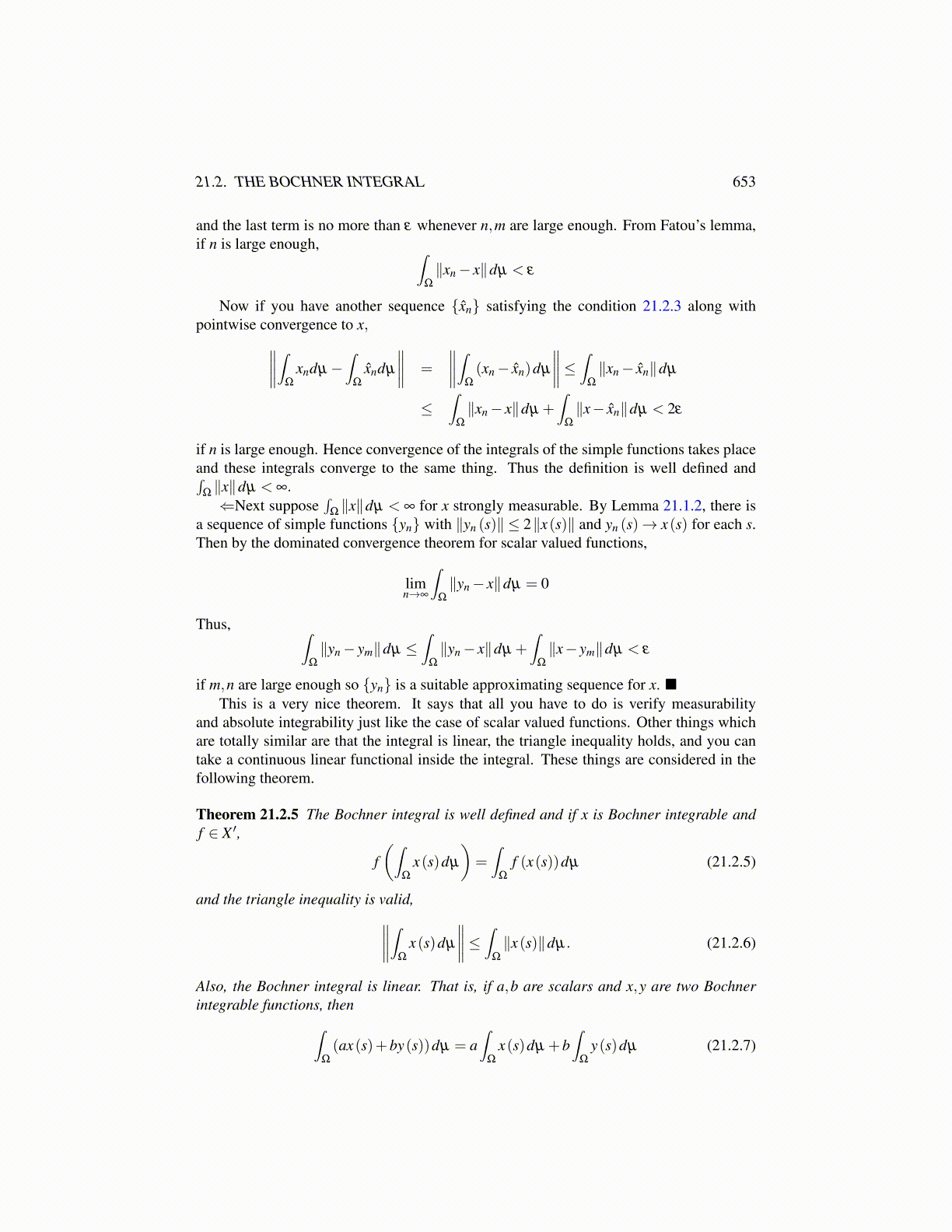
21.2. THE BOCHNER INTEGRAL 653
and the last term is no more than ε whenever n,m are large enough. From Fatou’s lemma,if n is large enough, ∫
Ω
∥xn− x∥dµ < ε
Now if you have another sequence {x̂n} satisfying the condition 21.2.3 along withpointwise convergence to x,∥∥∥∥∫
Ω
xndµ−∫
Ω
x̂ndµ
∥∥∥∥ =
∥∥∥∥∫Ω
(xn− x̂n)dµ
∥∥∥∥≤ ∫Ω
∥xn− x̂n∥dµ
≤∫
Ω
∥xn− x∥dµ +∫
Ω
∥x− x̂n∥dµ < 2ε
if n is large enough. Hence convergence of the integrals of the simple functions takes placeand these integrals converge to the same thing. Thus the definition is well defined and∫
Ω∥x∥dµ < ∞.⇐Next suppose
∫Ω∥x∥dµ < ∞ for x strongly measurable. By Lemma 21.1.2, there is
a sequence of simple functions {yn} with ∥yn (s)∥ ≤ 2∥x(s)∥ and yn (s)→ x(s) for each s.Then by the dominated convergence theorem for scalar valued functions,
limn→∞
∫Ω
∥yn− x∥dµ = 0
Thus, ∫Ω
∥yn− ym∥dµ ≤∫
Ω
∥yn− x∥dµ +∫
Ω
∥x− ym∥dµ < ε
if m,n are large enough so {yn} is a suitable approximating sequence for x.This is a very nice theorem. It says that all you have to do is verify measurability
and absolute integrability just like the case of scalar valued functions. Other things whichare totally similar are that the integral is linear, the triangle inequality holds, and you cantake a continuous linear functional inside the integral. These things are considered in thefollowing theorem.
Theorem 21.2.5 The Bochner integral is well defined and if x is Bochner integrable andf ∈ X ′,
f(∫
Ω
x(s)dµ
)=∫
Ω
f (x(s))dµ (21.2.5)
and the triangle inequality is valid,∥∥∥∥∫Ω
x(s)dµ
∥∥∥∥≤ ∫Ω
∥x(s)∥dµ. (21.2.6)
Also, the Bochner integral is linear. That is, if a,b are scalars and x,y are two Bochnerintegrable functions, then∫
Ω
(ax(s)+by(s))dµ = a∫
Ω
x(s)dµ +b∫
Ω
y(s)dµ (21.2.7)